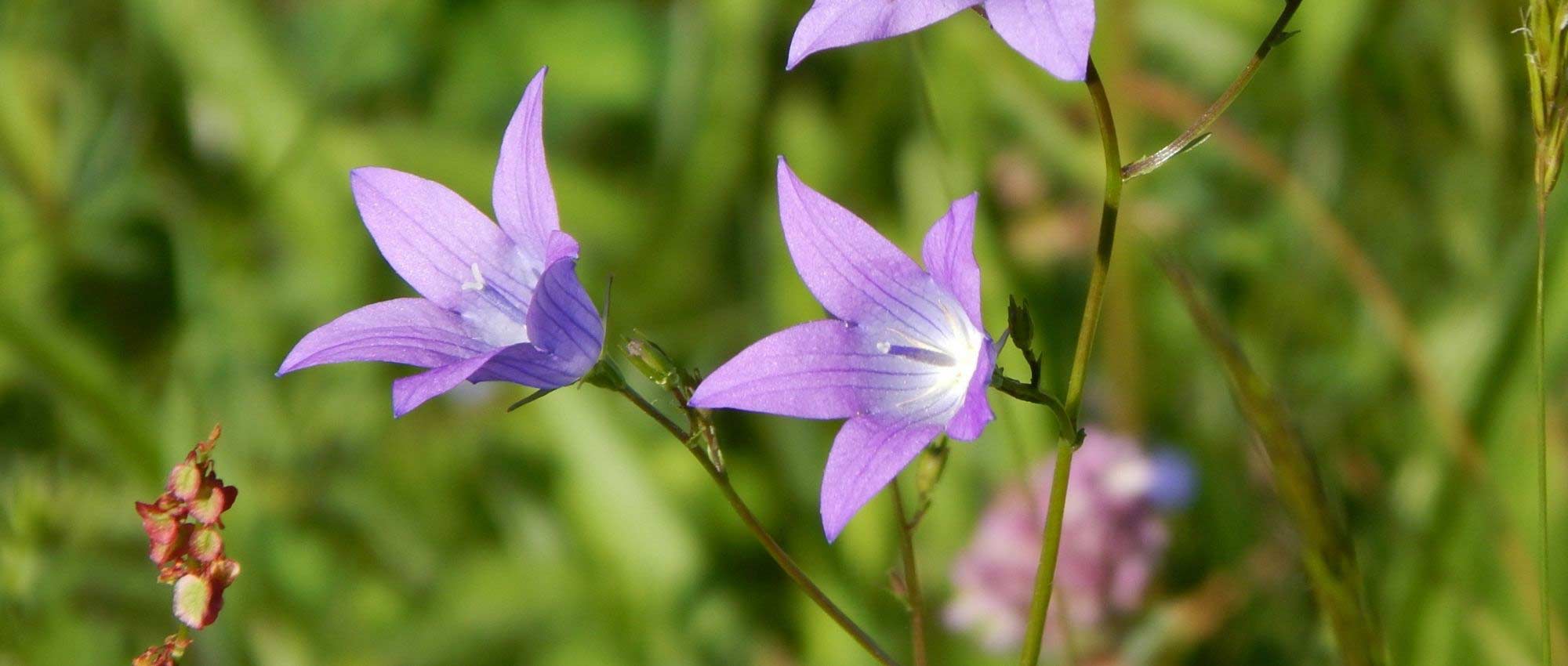
Gardening in calcareous soil: tips and suitable plants
Improve soil and choose the right plants!
Contents
To get the best results in your garden, it is important to know soil type and its characteristics (acid or calcareous, poor or rich, well-drained or compact…) and to adapt to them. Unlike acidic substrates, calcareous soils are those with a pH above 7. These are generally chalky, stony soils, fairly light in colour, even whitish… This type of ground requires specific care in your garden so that your plants thrive. If you have a garden of this type, discover all our tips to lay it out, choose the right plants, and care for them.
→ To check whether your soil is calcareous, see our advice sheet : « Acid soil, neutral soil or calcareous soil: how to tell? »
Advantages and disadvantages of calcareous soil
One of the main problems of calcareous soils is the risk of chlorosis. Indeed, lime present in soil prevents absorption of mineral nutrients, notably iron. In this case, plant foliage turns yellow between veins because chlorophyll disappears, which disrupts photosynthesis.
In general, calcareous soils contain more stones and pebbles, which tend to rise to surface. Thus, this type of soil is sometimes harder to work.
Finally, calcareous soils generally retain less water, they are more free-draining than others, which is an advantage in winter or for growing certain plants that dislike stagnant moisture, such as bulbous plants, succulent plants, or alpine plants… Likewise, you can more easily grow exotic plants with low hardiness. They will be a little less frost-sensitive in calcareous soil than in a substrate that retains water.
However, in summer, because soil is free-draining, plants may suffer during prolonged drought. If not watered regularly, calcareous ground may crack and dry out quickly. Likewise, calcareous soils are poorer in mineral nutrients. On the other hand, these soils warm up more quickly in spring. They allow slightly earlier planting. Likewise, they are generally more aerated, less compact. Plants are less likely to suffer from root asphyxiation.
However, soil can also be heavy and compact, clay-calcareous. In that case, it will retain more moisture. Plants will find it harder to develop their root system. They will be somewhat less hardy in winter. In that case, try to lighten soil and make it less compact.
How to design a garden on calcareous soil?
Lowering pH to make soil more acidic is difficult; however you can significantly improve soil by adding compost and organic matter. They will make soil richer and more fertile and improve its structure by encouraging humus formation.
If your soil is calcareous and dry, these additions will increase water retention and increase cohesion, humus acting like a sponge. If soil is clay-limestone and heavy, they will help lighten it, making it less compact and less asphyxiating for plant roots. In all cases, these additions improve soil structure. They also help limit risk of chlorosis.
Similarly, we recommend also using organic mulch (BRF, wood chips, straw…), which will help keep soil cooler for longer and, as it decomposes, will enrich soil. You can also grow green manures, which will improve soil structure and enrich it.
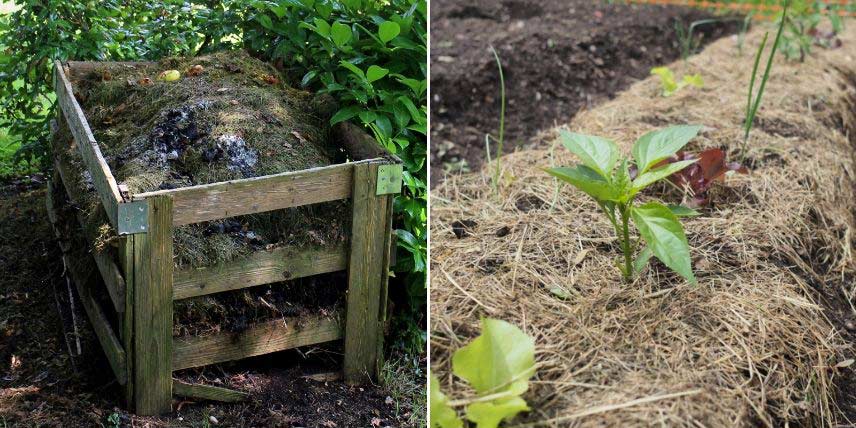
Adding compost and organic mulch will give you cooler, more fertile soil that holds water and mineral nutrients better.
When gardening on calcareous soil, we recommend working soil superficially with a broadfork (grelinette), avoiding turning earth over completely.
If your soil is calcareous and dry, when possible it is preferable to plant in autumn. Indeed, in this type of substrate plants tolerate cold and low winter temperatures better, but suffer more from summer drought. Thus, if you plant them in autumn they will have time to establish well and develop their root system before summer. Conversely, if your soil is clay-limestone, prefer spring planting, as excess winter moisture may hinder establishment and root development.
Finally, if your soil is well-draining, you can take the opportunity to create a rockery, where you can grow, for example, alpine plants or xerophytic plants. Choose a sunny spot then form a mound by placing large stones. You can put soil between stones, then plant there.
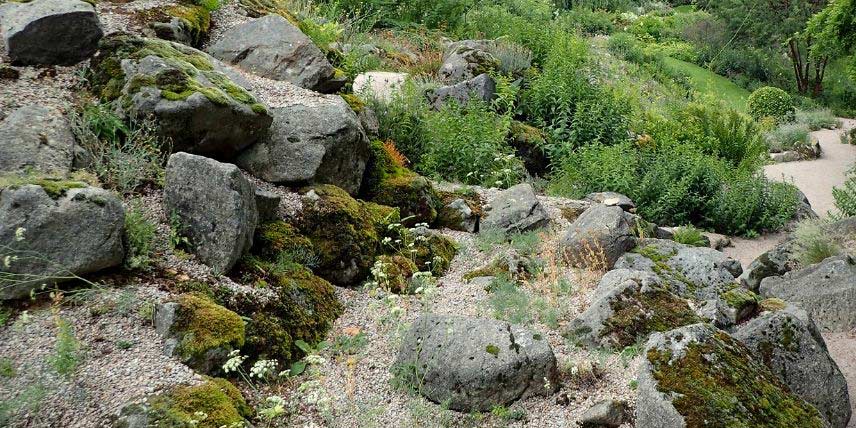
On calcareous ground, you can also create a rockery to grow plants that require little water and few mineral nutrients
Which plants are suitable?
Generally, choose calcicolous plants, which prefer lime-rich conditions, and of course avoid ericaceous plants, which do not tolerate lime and thrive in acidic soil (azaleas, rhododendrons, Pieris, etc.). If your soil is calcareous and dry, you can grow lavender, yarrow, pinks, or aubrieta. Many rockery plants appreciate this type of soil. Avoid plants that are too demanding in water and nutrients! You can also grow centaureas and cornflowers, which offer very delicate flowering with narrow petals. If your soil is calcareous clay, you can include hawthorns, elder, lilac, campanulas, Achillea ptarmica, Centaurea montana… In general, in the vegetable garden many vegetables appreciate slightly calcareous soils (cabbages, lettuces, beetroot, carrots…). Finally, if you want to grow roses, choose ones grafted onto a rootstock such as Rosa canina, which tolerates calcareous soil fairly well. If rootstock is unsuitable, they may develop chlorosis. For more information and options, discover our selection of perennials and bushes for calcareous soil!
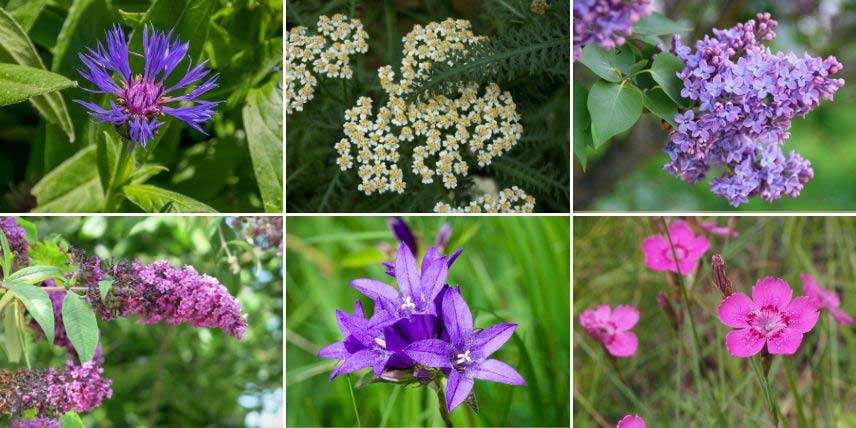
Some examples of plants adapted to calcareous soils: Centaurea montana (photo Krzysztof Golik), Achillea millefolium (photo Lorenzarius), lilac, Buddleia davidii, Campanula glomerata (photo Uoaei1), Dianthus deltoides (photo Hajotthu)
Read also
10 perennial plants for calcareous soilHow to plant in calcareous soil?
- Place young plant in basin filled with water to rehydrate rootball.
- Choose ideal location then dig a planting hole deep enough. Remove any large stones if present.
- Add well-rotted compost. It will enrich soil while improving its structure (soil more aerated, with better water-holding capacity…)
- Place your plant in the planting hole.
- Backfill by adding soil all around.
- Water generously and apply an organic mulch, made of dead leaves, BRF, or wood chips…
Continue to water in weeks following planting. Be vigilant during the following summer to ensure plant does not suffer from drought. It may require regular watering.
If planting in a rockery, and you have chosen drought-tolerant plants, simply make room for them between the stones, adding a little substrate, then plant them and water. No real need to add compost or organic mulch (prefer mineral mulch).
How to care for a garden on calcareous soil?
If your ground is calcareous and free-draining, we advise you to remain vigilant so your plants do not lack water and mineral elements.
Water regularly if necessary, or consider installing a drip irrigation system. It is important to mulch to keep soil cool. You can use ramial chipped wood (BRF), straw, wood chips, dead leaves… Use organic mulch rather than mineral, as the latter adds no organic matter to soil and does not improve its structure. When planting trees or bushes, you can form a watering basin around their trunk.
We recommend regularly adding well-rotted compost or manure. Also feel free to grow green manures from time to time to improve soil. Finally, if you see your plants’ foliage turning yellow between the veins, this is chlorosis: limestone present in soil blocks plant’s ability to assimilate mineral elements, and plant becomes deficient. In this case, we recommend spraying a product containing iron chelate. For more information, you can consult our advice sheet on iron chlorosis.
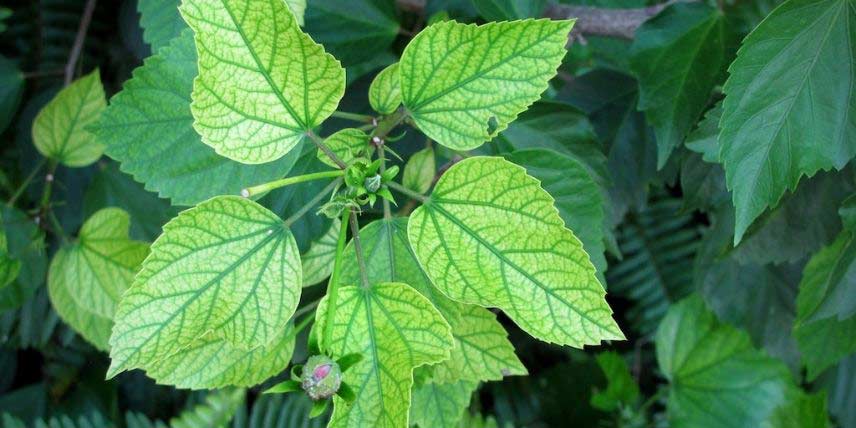
Iron chlorosis on hibiscus leaves (photo Malcolm Manners)
- Subscribe!
- Contents
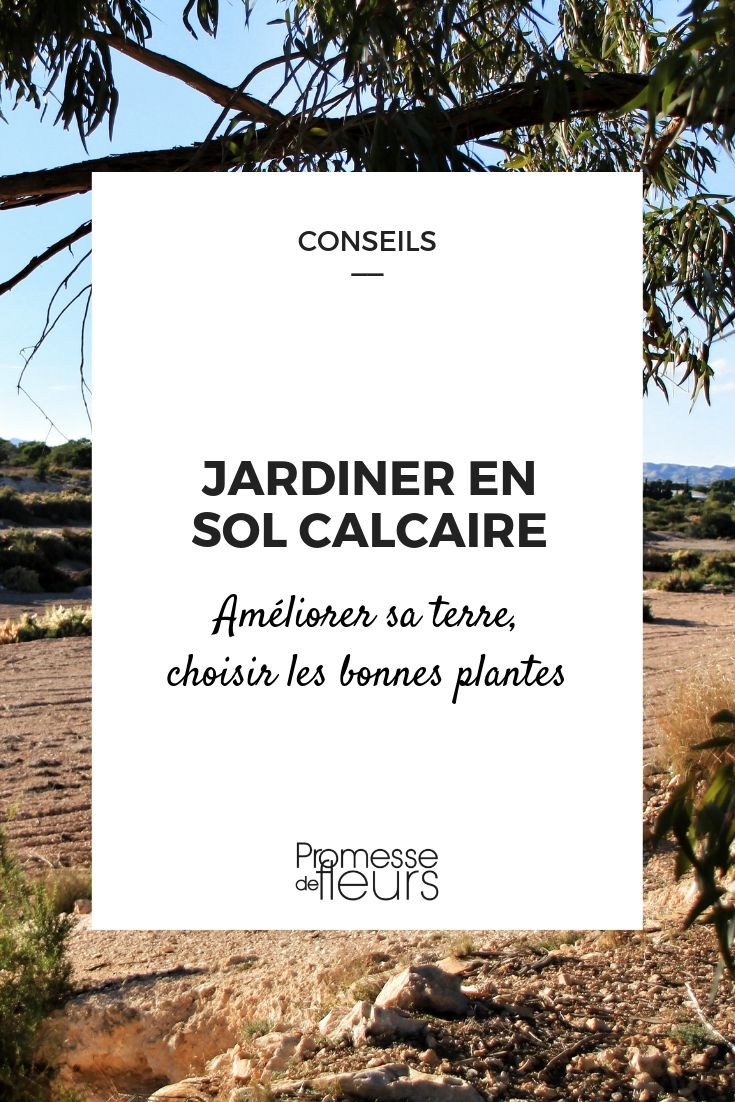































Comments